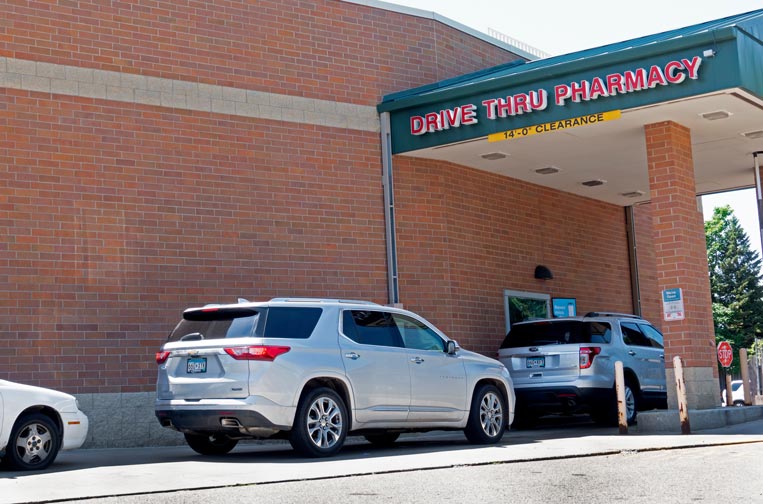Advertisment
Where patients live impacts whether they pick up their heart-failure medications

People who live in neighborhoods with higher levels of poverty and unemployment are less likely to fill their heart-failure drug prescriptions than those living in wealthier areas, a new study shows. The findings not only add to understanding geographic and economic disparities in heart disease care, but also point to new ways to address barriers for patients taking these lifesaving drugs.
Led by researchers at NYU Grossman School of Medicine, the study explored prescription pickup patterns among patients with systolic heart failure, a chronic, life-threatening condition in which the muscles of the heart weaken and lose their ability to pump blood effectively. Past research has shown that a combination of four drugs called “quadruple therapy” reduces risk of death by 400% in people with the disease, yet between 40% and 50% of patients do not regularly pick up their prescribed regimen from the pharmacy.
Analyzing electronic health records and pharmacy data from 6,247 adults diagnosed with heart failure, the authors found that when sorting neighborhoods into quarters based on socioeconomic status, more than half (52%) of patients from areas in the lowest quarter did not fill their heart-failure medications. By contrast, fewer patients living in areas in the highest quarter (40%) did not do so. Along these lines, the risk of not picking up these lifesaving medications was 11% higher for patients in neighborhoods with the lowest socioeconomic status than for those in areas of higher status. This amount of disparity is important because even differences in medication adherence of 5% to 10% can result in increased risk of death.
“Our findings highlight the importance of considering neighborhood socioeconomic status when developing interventions to ensure people with heart failure have access to their medications,” said study lead author, cardiologist Amrita Mukhopadhyay, MD. Mukhopadhyay is the Eugene Braunwald, MD, Assistant Professor of Cardiology in the Department of Medicine at NYU Langone Health.
Experts have long tied neighborhood socioeconomic status, which encompasses a complex network of factors such as income, education level, and property values, to filling prescriptions for other heart conditions, as well as for kidney disease and diabetes, the study authors say. However, its direct impact on filling prescriptions for the standard combination of heart-failure drugs had until now remained unclear.
A report on the new study is publishing online Dec. 14 in the journal JAMA Network Open.
For the investigation, the team collected prescription records and addresses for people diagnosed with heart failure within the NYU Langone hospital system in the New York metropolitan area between June 2020 and December 2021. Next, they used data from the United States Census Bureau to group neighborhoods by socioeconomic status. The authors then calculated the rates at which patients filled their prescriptions over a six-month period by measuring the ratio of days they filled their medication to the number of days a prescription was active.
“These results support targeting interventions that have already been shown to improve medication adherence, such as patient education programs and frequent follow-up with healthcare professionals, for those living in the most at-risk areas,” said study co-author Saul Blecker, MD, an associate professor in the Departments of Population Health and Medicine at NYU Langone.
Blecker cautions that while the research team found a connection between socioeconomic status and medication adherence, it is not yet known what specific factors are most responsible for that gap. Notably, the findings revealed that neither access to transportation nor the density of pharmacies in the area appeared to play a large role.
“Now that we have uncovered this disparity at a neighborhood level, we next need to explore additional barriers patients may be facing, such as the cost of drugs, language barriers, and discrimination by pharmacy staff,” said study senior author Samrachana Adhikari, PhD.
As a result, Adhikari, an associate professor in the Department of Population Health at NYU Langone, says that the study team next plans to examine whether and how out-of-pocket medication cost, differences in insurance policy coverage, and varying pharmacy hours may impact access to heart-failure drugs. She adds that the researchers intend to investigate ways to identify individual patients at highest risk for not taking their medications.
Funding for the study was provided by National Institutes of Health grant RO1HL155149.
In addition to Mukhopadhyay, Blecker, and Adhikari, other NYU investigators involved in the study are Xiyue Li, MS; Rumi Chunara, PhD; Yaguang Zheng, PhD, RN; Steven Lawrence, MS; and John Dodson, MD, MPH. Other study authors include Ian Kronish, MD, MPH, at Columbia University in New York City and Sam Kozloff, MD, at the University of Utah in Salt Lake City.





